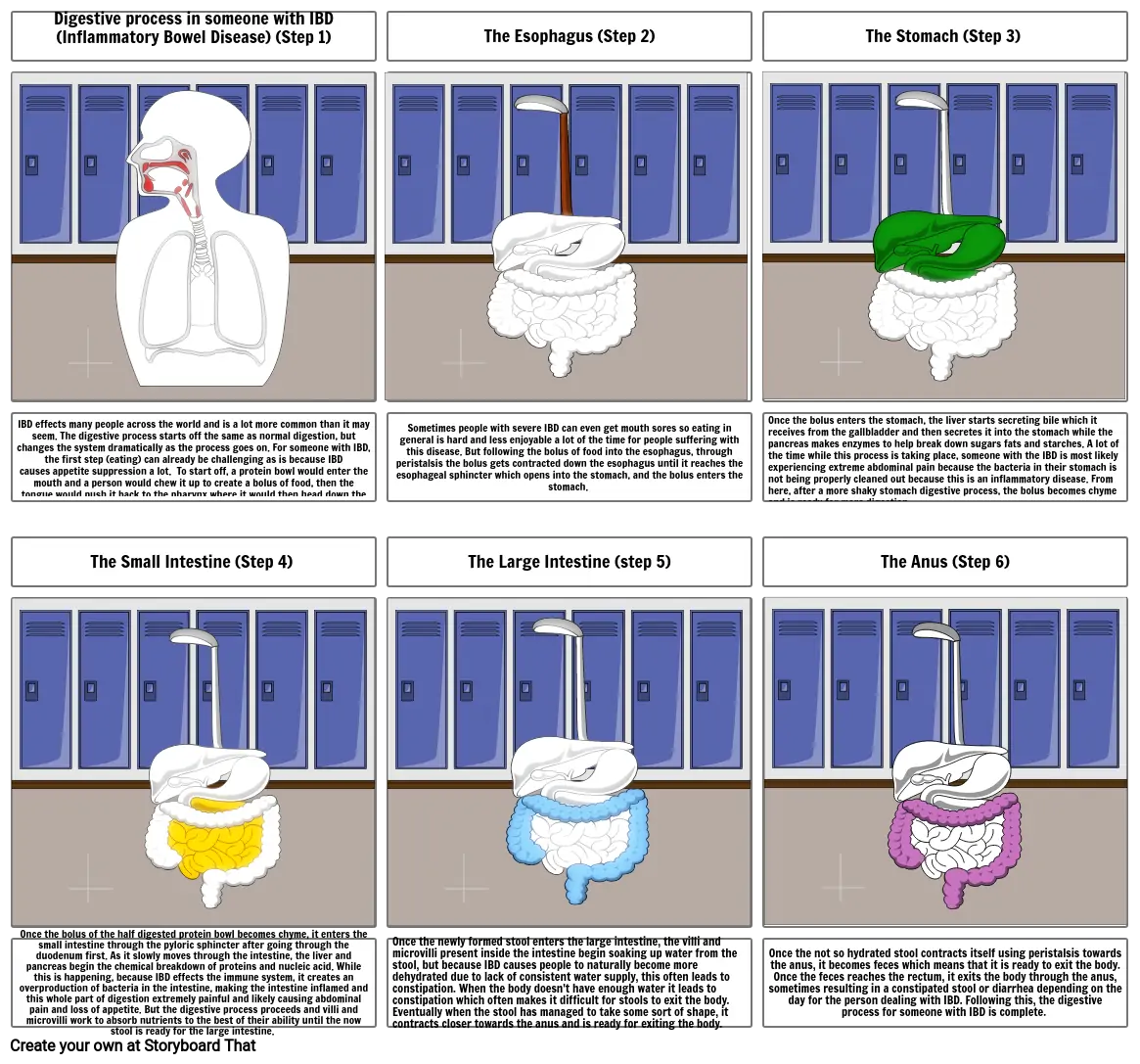Anatomy Digestive System Project

Storyboard Text
- Digestive process in someone with IBD (Inflammatory Bowel Disease) (Step 1)
- The Esophagus (Step 2)
- The Stomach (Step 3)
- IBD effects many people across the world and is a lot more common than it may seem. The digestive process starts off the same as normal digestion, but changes the system dramatically as the process goes on. For someone with IBD, the first step (eating) can already be challenging as is because IBD causes appetite suppression a lot. To start off, a protein bowl would enter the mouth and a person would chew it up to create a bolus of food, then the tongue would push it back to the pharynx where it would then head down the esophagus.
- The Small Intestine (Step 4)
- Sometimes people with severe IBD can even get mouth sores so eating in general is hard and less enjoyable a lot of the time for people suffering with this disease. But following the bolus of food into the esophagus, through peristalsis the bolus gets contracted down the esophagus until it reaches the esophageal sphincter which opens into the stomach, and the bolus enters the stomach.
- The Large Intestine (step 5)
- Once the bolus enters the stomach, the liver starts secreting bile which it receives from the gallbladder and then secretes it into the stomach while the pancreas makes enzymes to help break down sugars fats and starches. A lot of the time while this process is taking place, someone with the IBD is most likely experiencing extreme abdominal pain because the bacteria in their stomach is not being properly cleaned out because this is an inflammatory disease. From here, after a more shaky stomach digestive process, the bolus becomes chyme and is ready for more digestion.
- The Anus (Step 6)
- Once the bolus of the half digested protein bowl becomes chyme, it enters the small intestine through the pyloric sphincter after going through the duodenum first. As it slowly moves through the intestine, the liver and pancreas begin the chemical breakdown of proteins and nucleic acid. While this is happening, because IBD effects the immune system, it creates an overproduction of bacteria in the intestine, making the intestine inflamed and this whole part of digestion extremely painful and likely causing abdominal pain and loss of appetite. But the digestive process proceeds and villi and microvilli work to absorb nutrients to the best of their ability until the now stool is ready for the large intestine.
- Once the newly formed stool enters the large intestine, the villi and microvilli present inside the intestine begin soaking up water from the stool, but because IBD causes people to naturally become more dehydrated due to lack of consistent water supply, this often leads to constipation. When the body doesn't have enough water it leads to constipation which often makes it difficult for stools to exit the body. Eventually when the stool has managed to take some sort of shape, it contracts closer towards the anus and is ready for exiting the body.
- Once the not so hydrated stool contracts itself using peristalsis towards the anus, it becomes feces which means that it is ready to exit the body. Once the feces reaches the rectum, it exits the body through the anus, sometimes resulting in a constipated stool or diarrhea depending on the day for the person dealing with IBD. Following this, the digestive process for someone with IBD is complete.
Over 30 Million Storyboards Created

